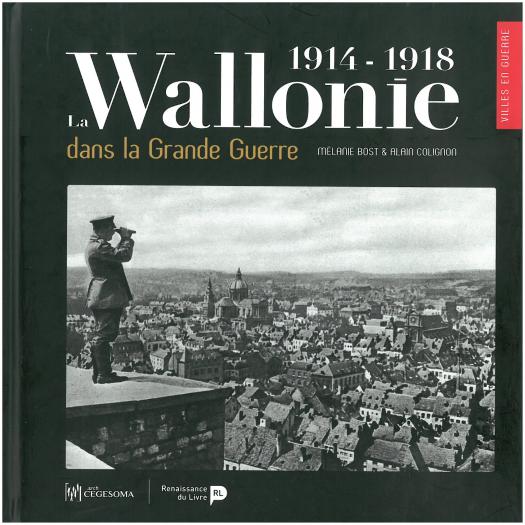La Wallonie dans la Grande Guerre 1914-1918.

The « Great War » from a different perspective
Based on mostly unpublished photographs of Walloon cities from 1914 to 1918, the book is part of the series “Villes en guerre”, which was launched several years ago by CegeSoma and the publishing house “La Renaissance du Livre”. The innovation of this study is that Wallonia is no longer seen from a purely Brussels perspective but that it now intends to capture the intimate life of the "ordinary citizen" of Wallonia confronted with the challenges of war, both in the heart of the fighting and in the greyness of occupation. One will find less about military history (although this not entirely absent, either) than a nuanced approach by an ill-prepared society suddenly engulfed in a large-scale conflict.
A story « from below »?
This story, which distances itself from the traditional Belgo-bruxellois context (without ignoring this altogether), is an approach “from below”, combining attention for the “common man” and the powerless with the small world of the provincial and local notables. Each in their own way had to put up with the German presence and therefore “live with the enemy”? It is clear that not everyone was enjoying the same privileges. Some could profit from the occupation from an economic perspective. Others were struggling to survive in a physically and morally deteriorating world. The use of exemplary photographs of the era, put into context and with critical comments, complete our historical knowledge while adding human depth. Needless to say that this kind of exercise is limited because of the nature of the visuals. Some are in fact a matter of pure propaganda and were anything but innocent. Hence the necessity to put them in perspective.
A truly global story ?
By throwing a spotlight on the big Walloon cities (Liège, Charleroi, Namur, Mons …), industrial agglomerations (Borinage, Centre, Pays Noir, Mouscron, …) and the smallest urban entities still dealing with 19th century conditions (Arlon, Wavre, Soignies, …), this publications appears at first sight as an exhaustive approach of the Walloon people confronted with the Great War. But one remark needs to be made : within the project’s framework the rural world, whose essential role as food supplier in times of shortages is widely recognized, had to remain absent from this work.
A different perspective of the Great War : that of the ordinary people in Wallonia